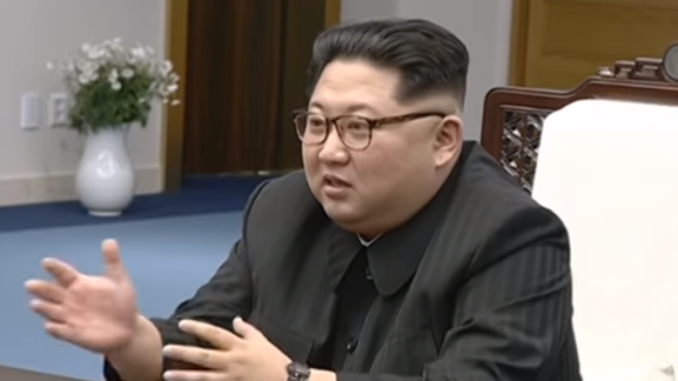
On Tuesday, May 29, The New York Times reported that North Korea’s senior nuclear weapons negotiator, Kim Yong-chol, was headed to the United States for continuing talks aimed at agreeing on an agenda for the June 12 U.S.-North Korea summit in Singapore. The agenda will be crucial, in large part, because it will define the summit’s outcome and longer-range end goals.
American summits at the head-of-state level, have typically had three outcomes: agreed communiques/statements, framework/interim agreements, and/or final agreements on areas of discussion. Over more than a quarter-century of on-again, off-again negotiations aimed at a denuclearized Korean Peninsula, the basic issues are fairly familiar. The exact details and their resolution remain major areas of contention.
So, how will the summit end? The worst-case scenario would be an inconclusive or failed outcome that results in separate statements (or none). Both leaders have too much at stake to permit such an outcome. That makes the most likely outcome a joint statement. Such a joint statement would contain broad language that sketches a vision of what the parties aim to achieve at the end of the diplomatic process, agreed principles to guide them, and shared understandings of how the diplomatic process will play out.
More ambitious would be an agreement in principle or framework agreement. Such an agreement would cover the major issues between the parties in much greater detail than a joint statement. The very limited time between now and the summit, magnitude of differences between the two countries, and their mutual distrust makes this a lesser probability outcome. To be feasible, any such framework would have to resemble an updated version of the Clinton Administration’s 1994 Agreed Framework.
North Korea’s denuclearization will be the central focus of the talks. It will also be among the most difficult issues to resolve. Both North Korea and the United States very likely have different conceptions of “denuclearization.”
A commitment to North Korean denuclearization, by itself, would not be a breakthrough. North Korea has previously and often committed to denuclearization of the Korean Peninsula. In a Joint Declaration between North Korea and South Korea on January 20, 1992, North Korea accepted among the following terms:
1. The South and the North shall not test, manufacture, produce, receive, possess, store, deploy or use nuclear weapons.
2. The South and the North shall use nuclear energy solely for peaceful purposes.
3. The South and the North shall not possess nuclear reprocessing and uranium enrichment facilities.
The April 27, 2018 Panmunjom Declaration reached between North Korean leader Kim Jong-un and South Korean President Moon Jae-in stated, “South and North Korea confirmed the common goal of realizing, through complete denuclearization, a nuclear-free Korean Peninsula.”
A joint statement could cover all aspects of the production of nuclear weapons, reprocessing and uranium enrichment activities, identification of North Korea’s nuclear facilities and their closure, development of a complete inventory of North Korea’s nuclear weapons, the dismantlement of North Korea’s nuclear arsenal, the return of North Korea to the Treaty on the Non-Proliferation of Nuclear Weapons (NPT), and verification in very general terms.
Agreement on details will be difficult. Implementation of such an agreement could be even more challenging.
Intrusive verification would be required. The U.S. could even insist on North Korea’s being barred from any nuclear activities of any kind.
The diplomatic process has broken down over verification in the past. In October 2008, the United States reached a verification agreement in principle with North Korea under which U.S. inspectors would be granted access to North Korean sites “based on mutual consent” with North Korea. “Mutual consent” effectively gave North Korea a “veto” over U.S. inspectors. Two months later, the talks deadlocked over verification.
Prohibiting North Korea from any nuclear-related activity will very likely be a non-starter. Article IV of the Treaty on the Non-Proliferation of Nuclear Weapons (NPT) declares:
1. Nothing in this Treaty shall be interpreted as affecting the inalienable right of all the Parties to the Treaty to develop research, production and use of nuclear energy for peaceful purposes without discrimination and in conformity with Articles I and II of this Treaty.
2. All the Parties to the Treaty undertake to facilitate, and have the right to participate in, the fullest possible exchange of equipment, materials and scientific and technological information for the peaceful uses of nuclear energy….
North Korea could also seek to link its denuclearization to the removal of certain U.S. weapons systems from South Korea. It may also attempt to link denuclearization to wider political, economic, and military issues, all of which could complicate the process.
Finding agreement on the diplomatic path, itself, could also prove challenging. Currently, the United States envisions international sanctions being lifted only after North Korea has fully and verifiably denuclearized. North Korea will likely seek reciprocity in a staged diplomatic process, one in which it receives a degree of sanctions relief for agreements it reaches and measures it takes to implement those agreements. It could also seek a binding commitment that no new sanctions would be imposed during the diplomatic process.
“North Korea is poor but almost certainly not so desperate that Kim can be coerced into bargaining away the nuclear program his father and grandfather spent the past three decades assembling,” former Secretary of State Madeline Albright writes in her just published book, Fascism: A Warning. “This doesn’t mean that diplomacy is hopeless… Further down the road, diplomatic tools might, if artfully employed, eventually bring about a formal end to the Korean War, the normalization of relations, and ultimately—in return for credible security guarantees—the denuclearization of the peninsula.”
June 12 is not sufficiently “further down the road.” Although, the meeting between the two leaders will be highly symbolic, the concrete substance set forth in the joint statement and momentum forward afterward will determine whether this time will truly be different.

1 Trackback / Pingback
Comments are closed.